September – October 2022
Oviedo to Muxia

16 Days | 423 km | 12,854 m Elev. Gain


Camino de Santiago
The Camino de Santiago, which translates to “Way of St. James,” is a pilgrimage route network leading to the Cathedral de Santiago de Compostela in Galicia. The pilgrimage used to be a religious journey, but today people from all over the world come to walk the trails to Santiago de Compostela.
Camino Primitivo
I chose to do the Camino Primitivo, which starts at the Cathedral in Oviedo 320 km away from Santiago de Compostela. This route is known for being the original Camino route and has many ascents and descents through the mountains of Asturias, making it one of the hardest trails. From Santiago de Compostela, I continued walking to the “end of the world,” in Fisterra, and then to Muxia for an additional 108 km.
Day 1: Oviedo to El Escamplero
Day one started rough. I was hungover and the metro wasn’t moving, so had to find a taxi to the Bus Station in Madrid. Luckily I got some good sleep during the six-hour ride to Oviedo. After arriving in the city, I walked straight to the Cathedral but struggled to find the credential office. After finally getting my credentials, I started my 320 km walk to Santiago de Compostela.

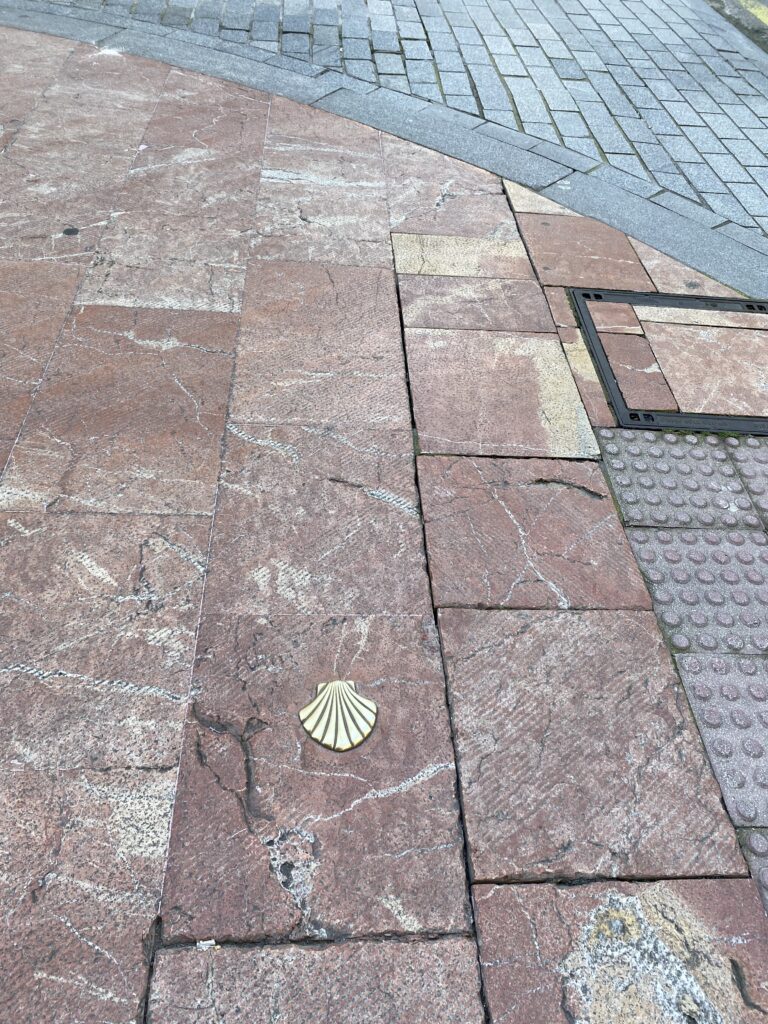
To get to Santiago de Compostela, you just have to follow the shell markings. In the city, the shell markings can be hard to find, because they can be on the wall or the floor. The credentials are important because it works as a pilgrim passport. Albuergues (pilgrim dorms), require guests to have the credentials, and you can also collect stamps on the camino to get a certificate at the end.
Although I started late, my legs were fresh and the weather was perfect, so I walked around 22 km and arrived at the Albuergue in El Escamplero at sunset. Found a completely unused room for myself in the Abluergue which was awesome, and had some lentil soup for dinner which was not as awesome.
Day 2: El Escamplero to Salas
Another day of amazing weather. Bought a giant sandwich at a supermarket for Lunch. The grandmas working there were super nice, one of them even gave me a lollipop.

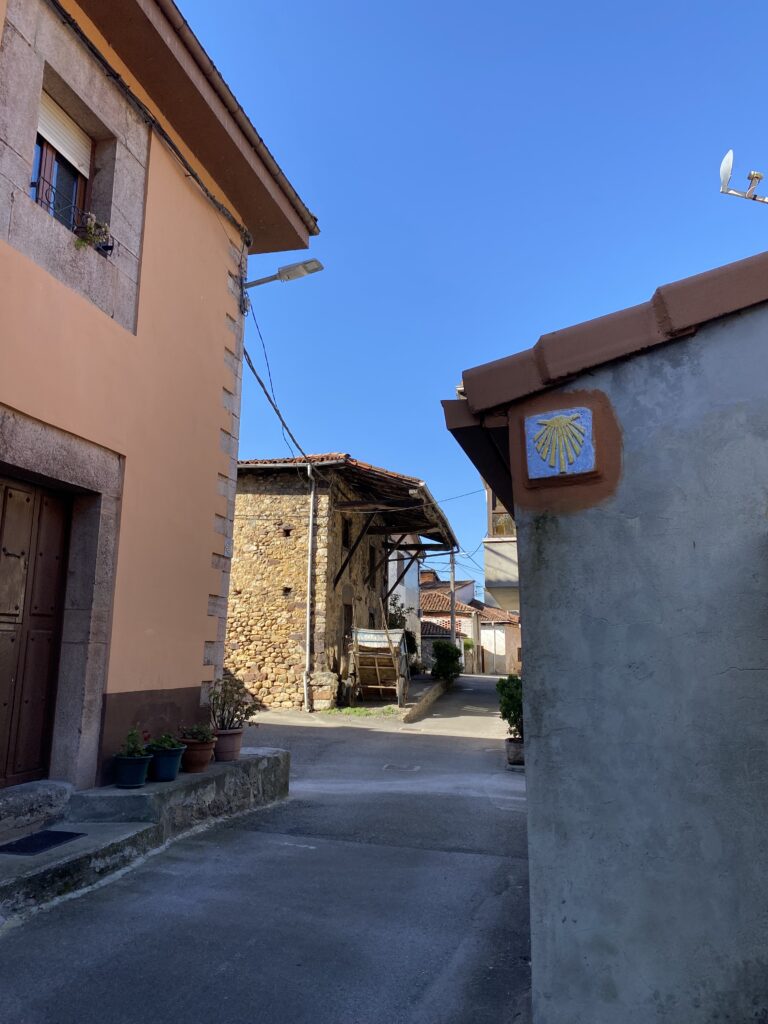
Ended the day with over 30 km, setting a new record for myself. The last few kilometers were a struggle but luckily I made it to a nice Albergue in Salas. This Albergue was donation-based, and I gave him all the cash I had (six euros), but he gave me the look, that tells me it was not enough. Oh well. At night, I went to a bar that serves free tapas with beer, so I had two beers.
Day 3: Salas to Borres
After getting some uncomfortable sleep, I started my walk at seven, which was a mistake since the sun was not up, and I didn’t have my headlights, so I had to use my phone light for an hour.

After another day of over 30 km, I barely made it to the Albergue in the small town of Borres, where I got the very last bed. Unfortunately, the last bed was the top bunk of a three-story bunk bed that would sway an uncomfortable amount, whenever one person rolled over.
Day 4: Borres to Berducedo
This segment from Borres to Berducedo is supposedly one of the hardest on the Camino Primitivo. I tried to get some good sleep but got woken up three times. Twice to someone screaming in their sleep, and once to someone falling out of the top bunk.

I walked a few miles with Medina, a girl from Kazakhstan, who I met at the Albuergue the night before. It was nice talking to someone other than myself for a bit. I made the mistake of pushing too hard in the morning, and started slowing down in the afternoon. Pau, a guy from Barcelona, caught up from behind and walked with me, which gave me a boost. Turns out, he was the one that fell out of his bunk last night.
Berducedo had a great Albergue and a grocery store, where I ate a day’s worth of food for dinner.
Day 5: Berducedo to Grandas de Salime

Walked the 20 km to Grandas de Salinas with a Dutch guy in his 50s. Had some personal and interesting conversations with him. Part of what made the Camino interesting was the conversations I had with people who I would never talk to in a normal setting. We got lunch in Grandas de Salime, and had the local specialty of Octopus and potatoes, which was good but a bit too oily. I don’t know why Octopus is a specialty in a town in the mountains.

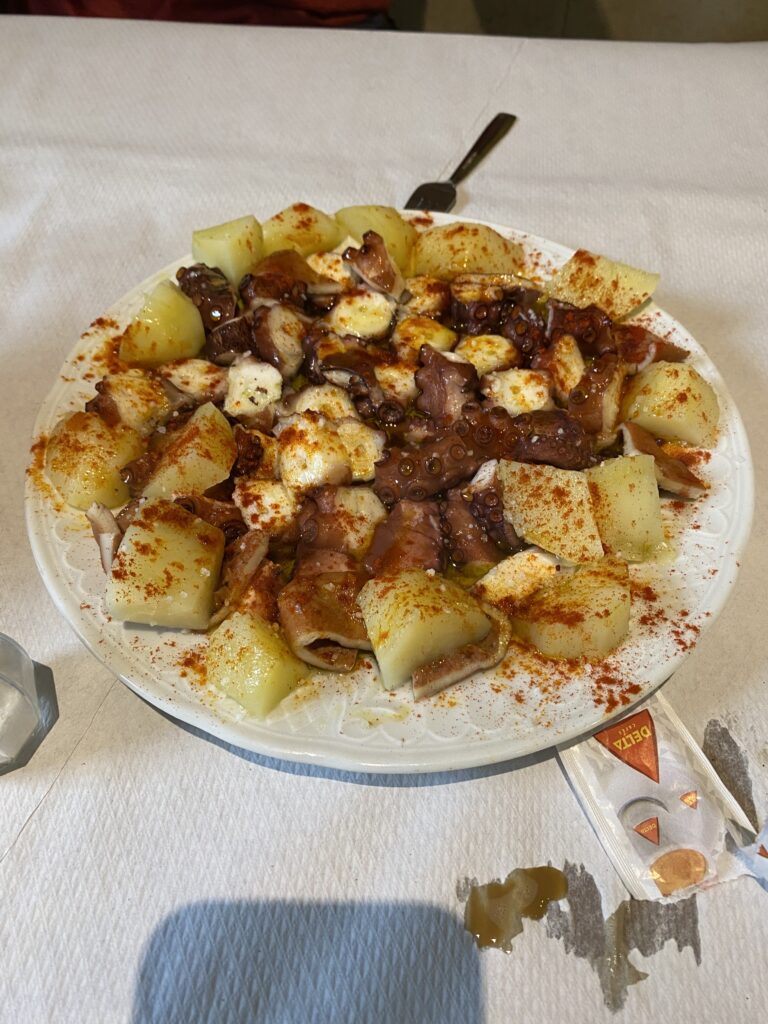
Day 6: Gradas de Salinas to A Fonsagrada
Got kicked out of the Albergue at nine, and started my walk to A Fonsagrada. Somewhere in between, I crossed the border from Asturias to Galicia, which felt like a bit of a milestone. The hills were very tough, but the walking was getting easier. It was nice knowing my legs were getting a lot stronger.
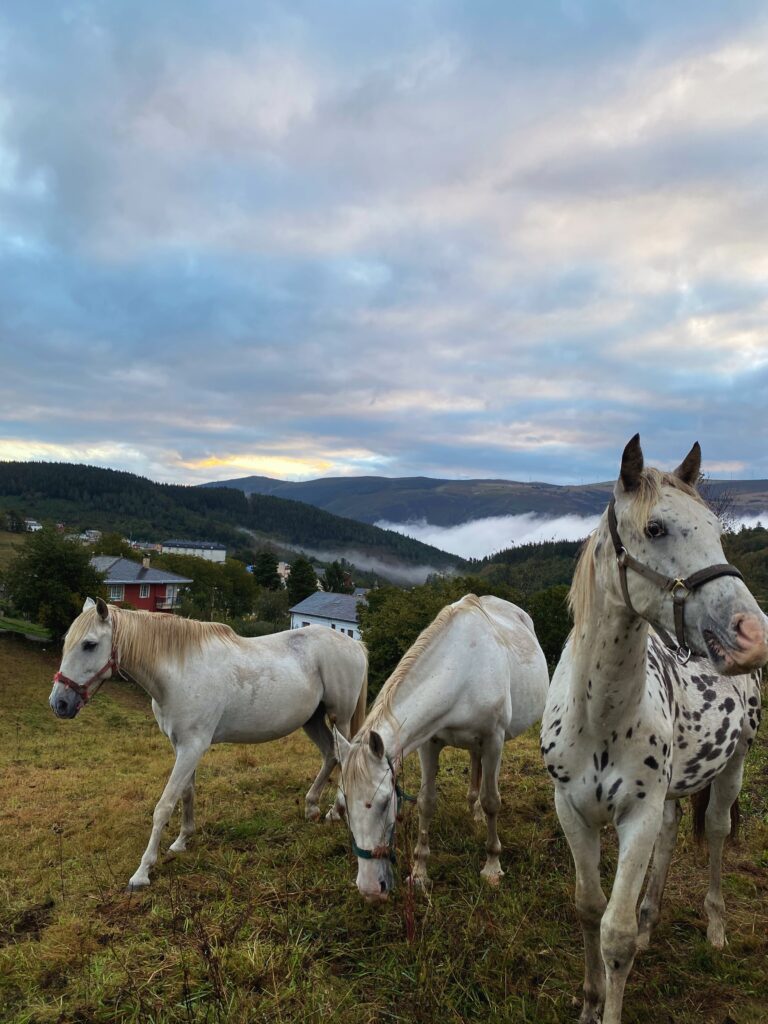

Day 7: A Fonsagrada to Cadao Baleira
On the Camino, the pilgrims and the locals use the phrase, “Buen Camino,” to greet each other. After saying “Buen Camino” to the same pilgrims day after day, I felt a sense of camaraderie with them. Seeing them on the trail would give me a little energy, and being able to talk about the day with them was really nice.
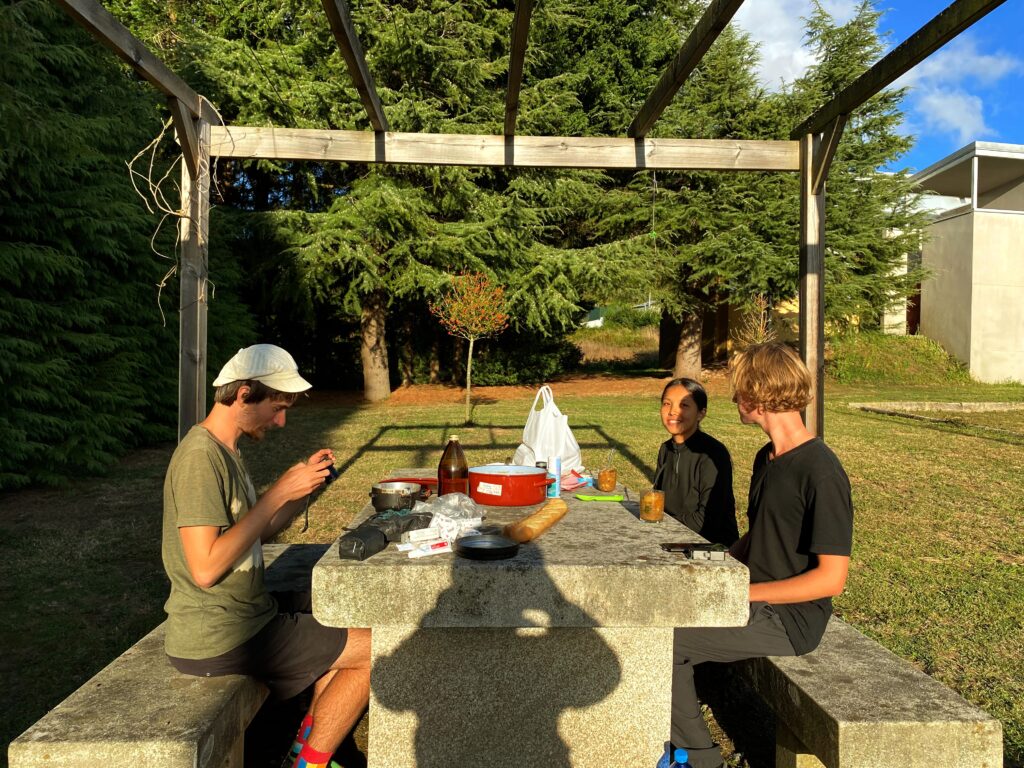
Had lentil soup for dinner at the Albergue, with Medina, Jan, and Andrew. It was really funny listening to them argue about who had the best lentil soup recipe.
Day 8: Cadao Baleira to Lugo
The flat landscape of Galicia made walking much easier, but the views were becoming less impressive. The 30 km walk to Lugo did not hurt, and seeing the sign indicating 100 km to go was another morale boost. Lugo was much bigger than I had anticipated, and the Albergue was in the city center surrounded by ancient Roman walls, which was super cool. Enjoyed a churro with chocolate sauce to celebrate.

Had a very mediocre burger at an American-themed restaurant for dinner. I still don’t know why I decided to eat there. I found out about the curfew, when I got back to the Albuergue, and the front door was locked. After throwing my water bottle at the window of the bathroom for five minutes, thankfully someone noticed and got me in.
Day 9: Lugo to As Seixas
Started walking while it was still dark out, and got lost trying to follow the shell markings out of the city center. Walked another 32 km before calling it a day.
At the Albergue, I met Rafa, who was the only American guy I had met on the Camino, and he was only a year older than me. It was a nice change of pace in conversation, to talk to someone from home.
Played some cards with Pau and the Chilean guys after dinner which was also fun.
Day 10: As Seixas to Ribadiso
After feeling super strong walking the previous day, day ten turned out to be a painful 25km. At some point on the path to Ribadiso, the Camino Primitivo merged with the Camino Frances, the most popular Camino route. On the Camino Primitivo, I would see the same dozen faces on the trail every day. Suddenly, there were hundreds of people on the trail creating a very different vibe.
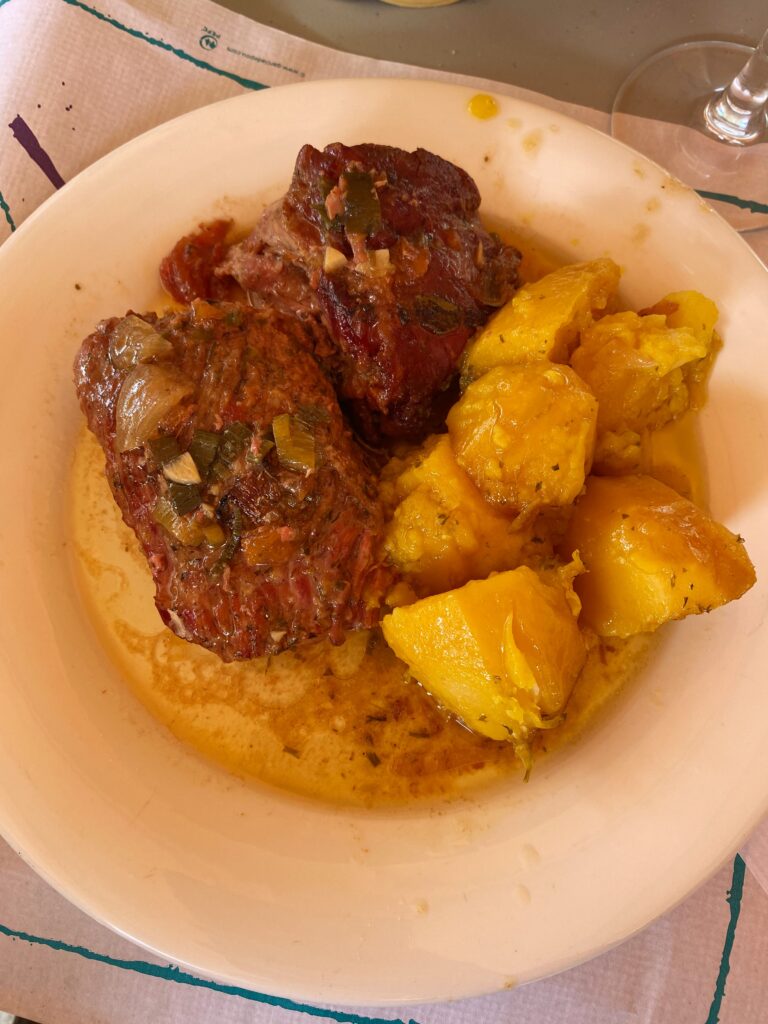
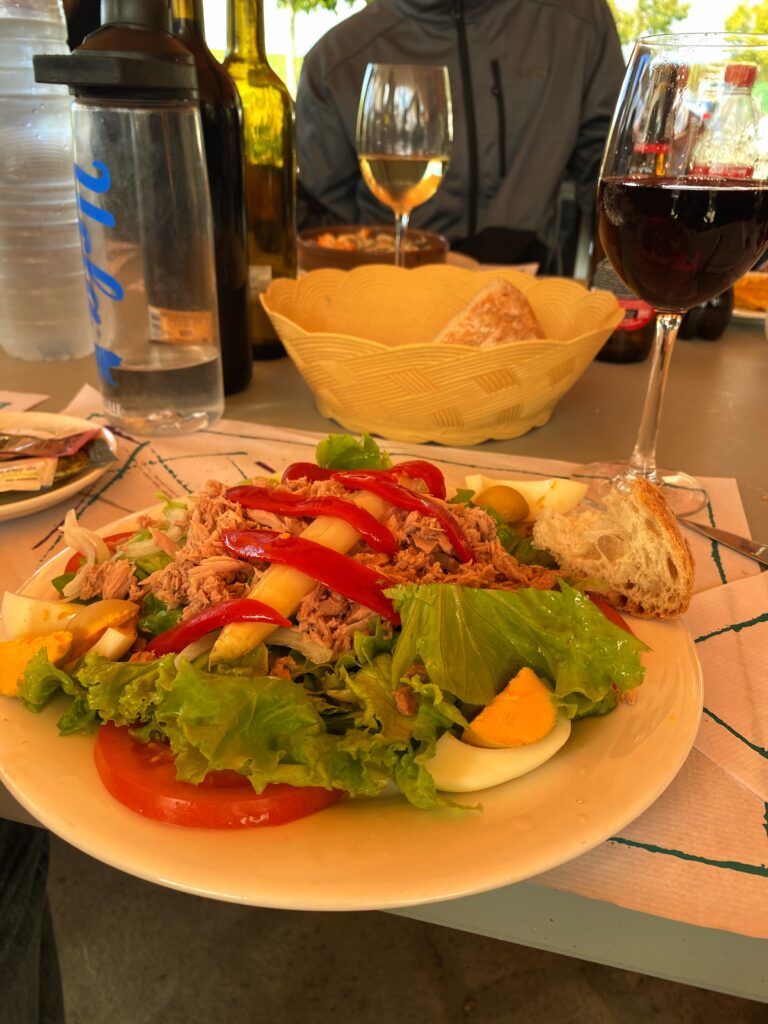
Ordered the “menu del dia”(menu of the day), for a very nice late lunch. All the pilgrims from the Camino Primitivo sat together on a big table, sharing stories and wine. After all, “no vino, no camino.” It was super cool to have a group of friends to sit and eat with, after starting all alone just ten days ago.
Found out from Javi, that 2022 was the year of the Xacobeo, which is a holy year for St. James, and in turn, a holy year to walk the Camino.
Day 11: Ribadiso to Labacolla
The walk to Labacolla was the most fun. I walked with Pau, Javi, and Eleanor, which meant every stop was a beer stop. We ended the 32 km, with four beers in our stomachs. I had more beer on this walk than I’ve had since I started.
It was an awesome last night on the Camino Primitivo, as we drank rum & cokes and just hung out playing cards. There were just ten kilometers left to Santiago de Compostela.
Day 12: Labacolla to Santiago de Compostela to Negreira
I may have had one too many rums & cokes and had to be woken up by Rafa. As we followed some of the last shell markings to the Cathedral, we joined people from all the different Caminos. I could feel the excitement in the air. As we turned the final corner, we found ourselves in a big plaza right in front of the Cathedral. Hundreds of people who had also just finished their Camino were enjoying the view, congratulating each other. There was such a good vibe, that I almost teared up. There were also so many familiar faces spread out on the plaza, reminding me of how much of the Camino is about the people you meet along the way.
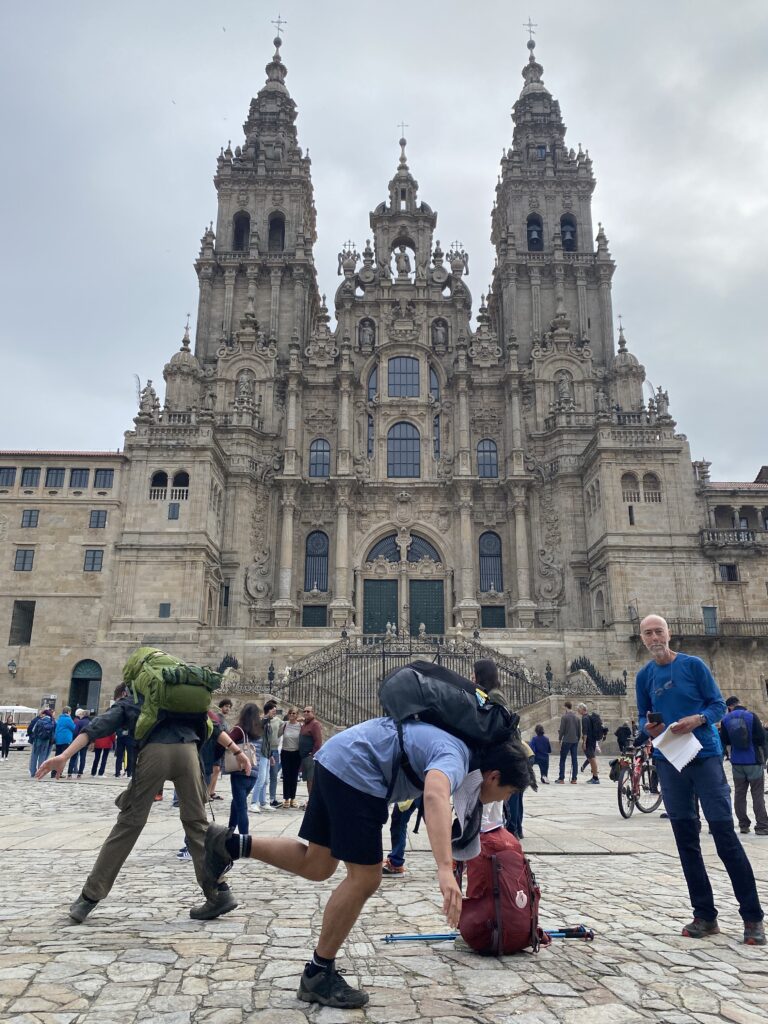
We got our certificates for completing the Camino, and tried to get into the Cathedral for mass, but gave up after seeing the massive line. We joined the rest of our Camino Primitivo crew, AKA “La Bestia(The Beasts)”, where I enjoyed one final drink with them. Part of me wanted to stay in Santiago de Compostela for the night, but finding accommodation seemed too much of a pain, so I kept walking to Fisterra.


Was able to put in another 20 km to a town called, Negreira, before calling it a day at sunset. Looking back, I couldn’t be happier with my decision to do the Camino Primitivo. The weather had been perfect, the views from the mountains were amazing, and the people I had met were special.
Day 13: Negreira to Lago
This day turned out to be a bit of a sad day, as I spent the entire day walking alone. None of my Camino Primitivo friends had planned on continuing on the Camino Fisterre, which meant there were no more familiar faces on the trail. The Albuergue in Lago had super stable bunk beds, and delicious food, which made my day a bit better.
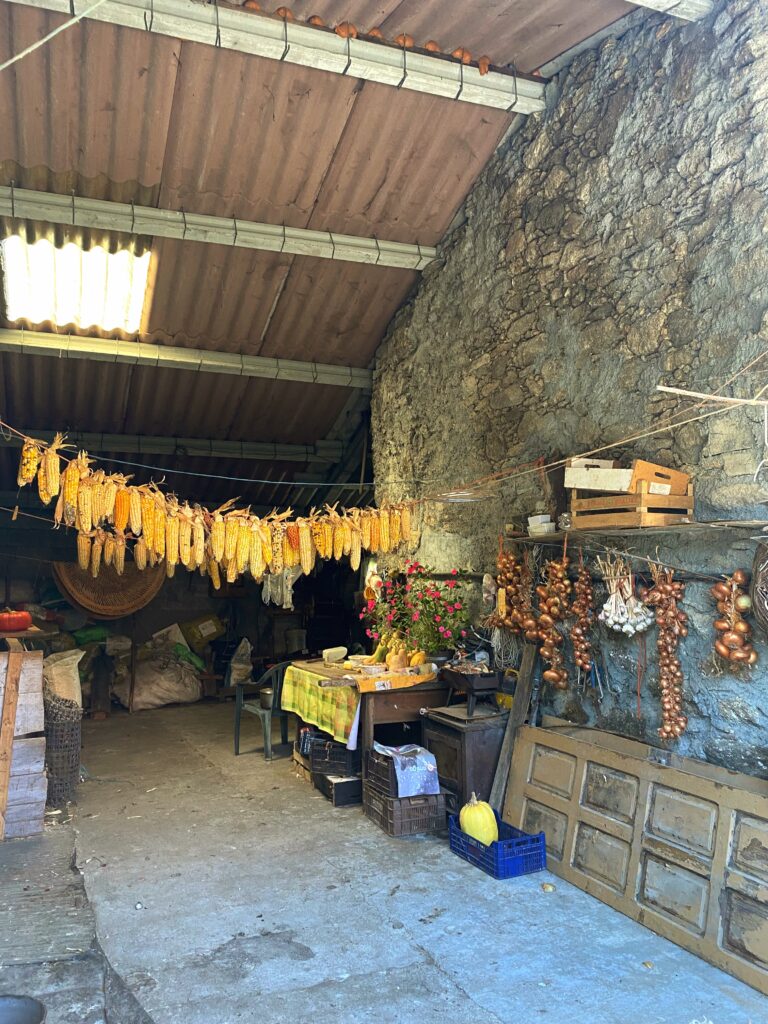
Day 14: Lago to Fisterra
As I continued from Lago, the trail split, one heading to Cape Fisterra, and one heading to Muxia. Fisterra and Muxia have long been known as the “end of the world,” attracting pilgrims who wanted to keep walking.

I started listening to a new podcast, which helped the 37km walk to Fisterra go by faster. My legs were sore, but doing these big distances without much pain felt nice. Reaching the coast was also a great feeling and a nice change in scenery.
Day 15: Rest Day in Fisterra
I was not ready to walk to Muxia, so decided to spend the day relaxing in Fisterra. I made my way to Faro de Fisterra, the lighthouse, and the true end of the Camino Fisterra. Found a nice hidden spot by the rocks, where I was able to take a nap and write some postcards for family and friends. Treated myself to a nice dinner of sopa de pescado and milanesa de pollo for dinner to celebrate.
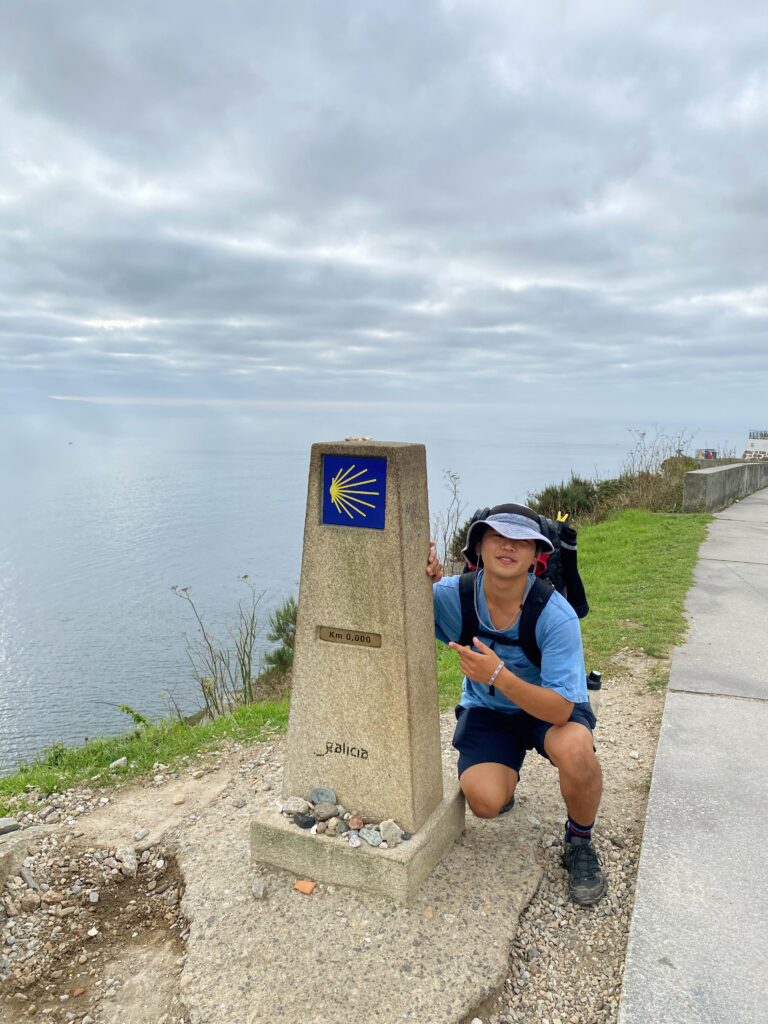
Day 16: Fisterra to Muxia
My final day on the Camino was a 27 km walk to a Muxia. The day started perfectly with a beautiful sunrise and rested legs. The weather was turning, so had to speed walk through the final portions. I arrived at the lighthouse in Muxia before noon and celebrated with a cheeky cigarette for myself.


Celebrations were short since I had to catch the night bus to Madrid. I paid five euros to the Albergue in Muxia to shower, which felt like a ripoff, but better than a sweaty bus ride.
In the 16 days of walking, I did not have any major life realizations like I was expecting, but I still felt very satisfied with my Camino. What makes the Camino de Santiago special, are all the different pilgrims you meet and the moments(and wine) shared with them. Though no secret to life was found, I met some of the coolest people and shared some cool memories, making this a successful adventure.
Special Thanks to Lilly, Alyssa, and Rachel for hosting me in Madrid.